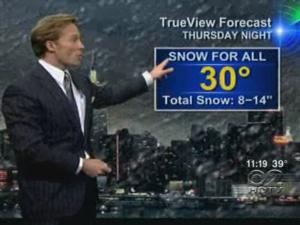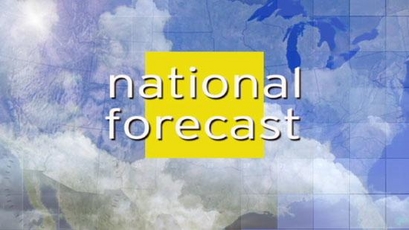TALCA, Chile – A devastating earthquake struck Chile early Saturday, toppling homes, collapsing bridges and plunging trucks into the fractured earth. A tsunami set off by the magnitude-8.8 quake threatened every nation around the Pacific Ocean — roughly a quarter of the globe.
Chileans near the epicenter were tossed about as if shaken by a giant. It was the strongest earthquake to hit Chile in 50 years and one of the strongest ever measured anywhere. President-elect Sebastian Pinerasaid more than 120 people died, but that number was rising quickly.
The quake shook buildings in Argentina's capital of Buenos Aires, and was felt as far away as Sao Paulo in Brazil — 1,800 miles (2,900 kilometers) to the east.
In Talca, just 65 miles (105 kilometers) from the epicenter, furniture toppled as the earth shook for more than a minute in something akin to major airplane turbulence. The historic center of town largely collapsed, but most of the buildings of adobe mud and straw were businesses that were not inhabited during the 3:34 a.m. (1:34 a.m. EST, 0634 GMT) quake.
Neighbors pulled at least five people from the rubble while emergency workers, themselves disoriented, asked for information from reporters.
Collapsed roads and bridges complicated north-south travel in the narrow Andean nation. Electricity, water and phone lines were cut to many areas — meaning there was no word of death or damage from many outlying areas.
In the Chilean capital of Santiago, 200 miles (325 kilometers) northeast of the epicenter, a car dangled from a collapsed overpass, the national Fine Arts Museum was badly damaged and an apartment building's two-story parking lot pancaked, smashing about 50 cars whose alarms rang incessantly.
Experts warned that a tsunami could strike anywhere in the Pacific. Emergency officials set off shrieking alarm sirens across parts ofHawaii, which could face its largest waves since 1964 starting at 11:19 a.m. (4:19 p.m. EST, 2119 GMT), according to Charles McCreery, director of the Pacific Tsunami Warning Center.
Police and troops in Tonga began evacuating people from low-lying coastal areas and experts warned that tsunami waves were likely to hit Asian, Australian and New Zealand shores within 24 hours of the earthquake. The U.S. West Coast and Alaska, too, were threatened.
Waves 6 feet (1.8 meter) above normal hit Talcahuano near Concepcion 23 minutes after the quake, andPresident Michelle Bachelet said a huge wave swept into a populated area in the Robinson Crusoe Islands, 410 miles (660 kilometers) off the Chilean coast. There were no immediate reports of major damage from the waves.
Bachelet said she had no information on the number of people injured in the quake. She declared a "state of catastrophe" in central Chile but said Chile has not asked for assistance from other countries.
"The system is functioning. People should remain calm. We're doing everything we can with all the forces we have," she said.
Powerful aftershocks rattled Chile's coast — 29 of them magnitude 5 or greater and one reaching magnitude 6.9 — the U.S. Geological Survey reported.
In Santiago, modern buildings are built to withstand earthquakes, but many older ones were heavily damaged, including the Nuestra Senora de la Providencia church, whose bell tower collapsed. A bridge just outside the capital also collapsed, and at least one car flipped upside down.
Several hospitals were evacuated due to earthquake damage, Bachelet said.
Santiago's airport will remain closed for at least 24 hours after the passenger terminal suffered major damage, airport director Eduardo del Canto told Chilean television. TV images showed smashed windows, partially collapsed ceilings and pedestrian walkways destroyed.
Santiago's subway was shut as well and hundreds of buses were trapped at a terminal by a damaged bridge, Transportation and Telecommunications Minister said. He urged Chileans to make phone calls or travel only when absolutely necessary.
In Concepcion, Chile's second-largest city and only 70 miles (115 kilometers) from the epicenter, nurses and residents pushed the injured through the streets on stretchers. Others walked around in a daze wrapped in blankets, some carrying infants in their arms. A 15-story building collapsed, leaving only a few floors intact.
"I was on the 8th floor and all of a sudden I was down here," said Fernando Abarzua, marveling that he escaped with no major injuries. He said a relative was still trapped in the rubble six hours after the quake, "but he keeps shouting, saying he's OK."
Marco Vidal, a program director for Grand Circle Travel who was traveling with a group of 34 Americans, was on the 19th floor of the Crown Plaza Santiago hotel when the quake struck.
"All the things start to fall. The lamps, everything, was going on the floor," he said. "I felt terrified."
Cynthia Iocono, from Linwood, Pennsylvania, said she first thought the quake was a train.
"But then I thought, `Oh, there's no train here.' And then the lamps flew off the dresser and my TV flew off onto the floor and crashed."
The quake struck after concert-goers had left South America's leading music festival in the coastal city of Vina del Mar, but it caught partiers leaving a disco.
"It was very bad. People were screaming. Some people were running, others appeared paralyzed. I was one of them," Julio Alvarez told Radio Cooperativa.
The Pacific Tsunami Warning Center called for "urgent action to protect lives and property" in Hawaii, which is among 53 nations and territories subject to tsunami warnings.
"Sea level readings indicate a tsunami was generated. It may have been destructive along coasts near theearthquake epicenter and could also be a threat to more distant coasts," the warning center said. It did not expect a tsunami along the west of the U.S. or Canada.
The largest earthquake ever recorded struck the same area of Chile on May 22, 1960. The magnitude-9.5 quake killed 1,655 people and left 2 million homeless. The tsunami that it caused killed people in Hawaii,Japan and the Philippines and caused damage to the west coast of the United States.
Saturday's quake matched a 1906 temblor off the Ecuadorean coast as the seventh-strongest ever recorded in the world.








